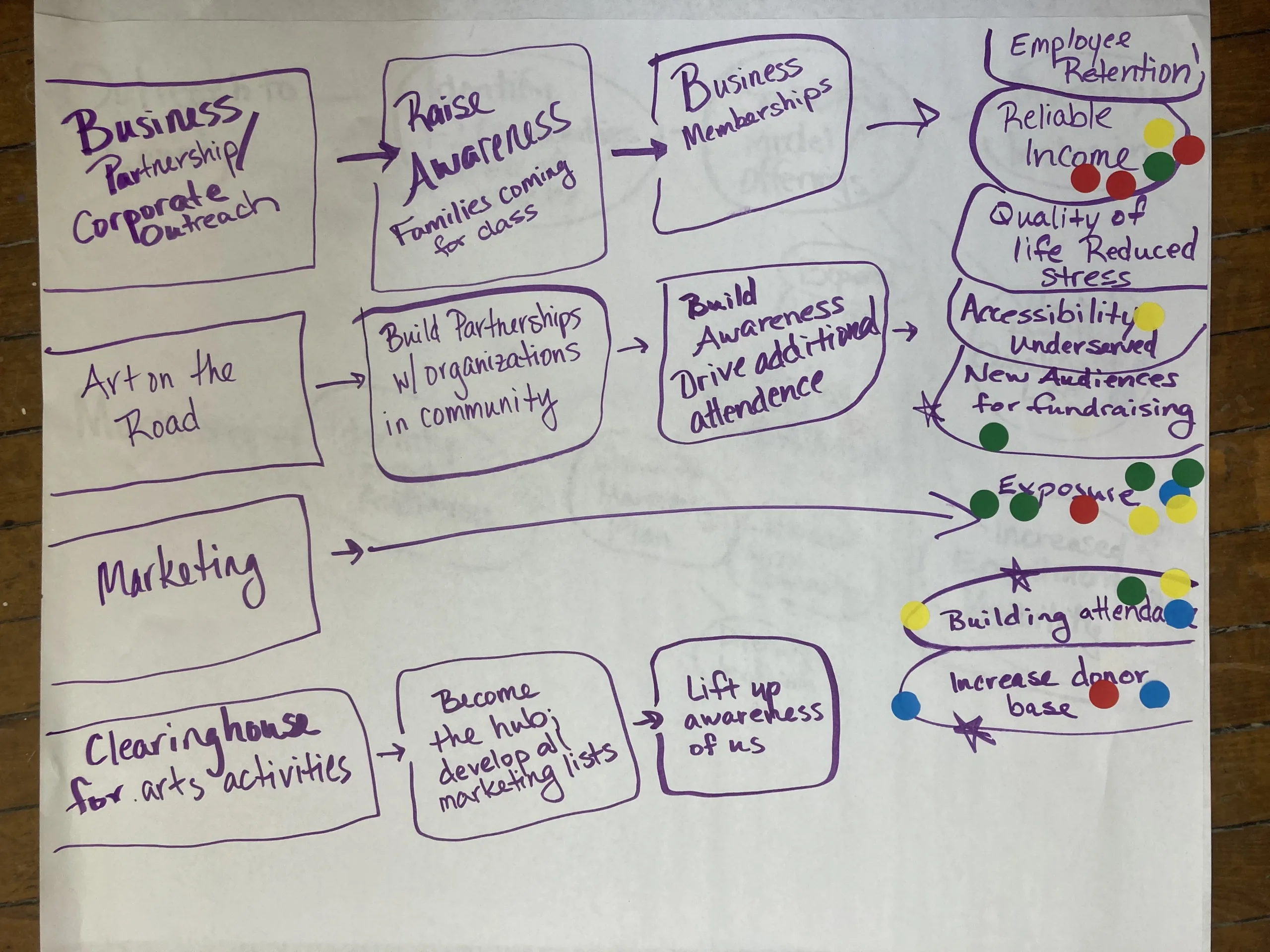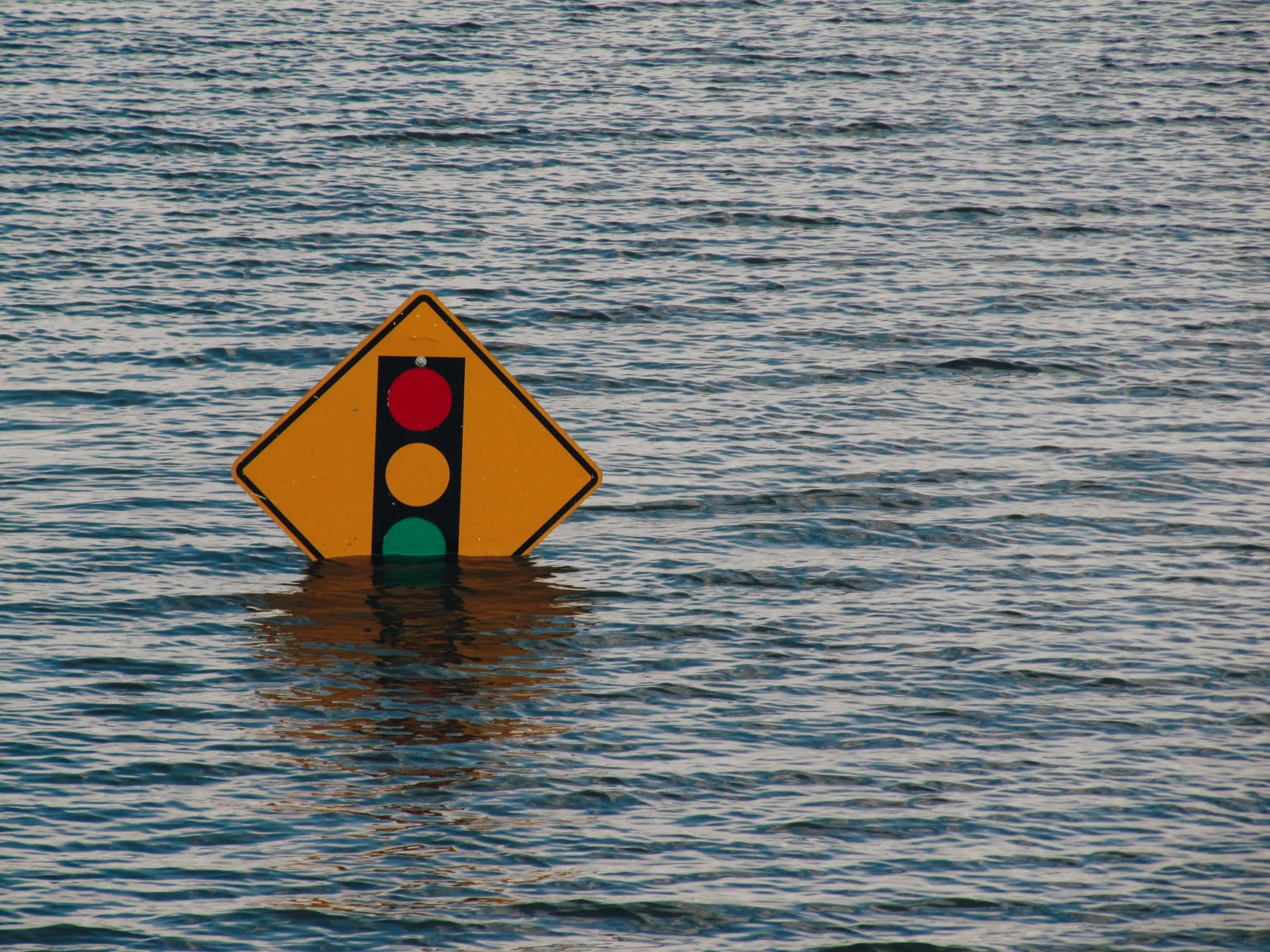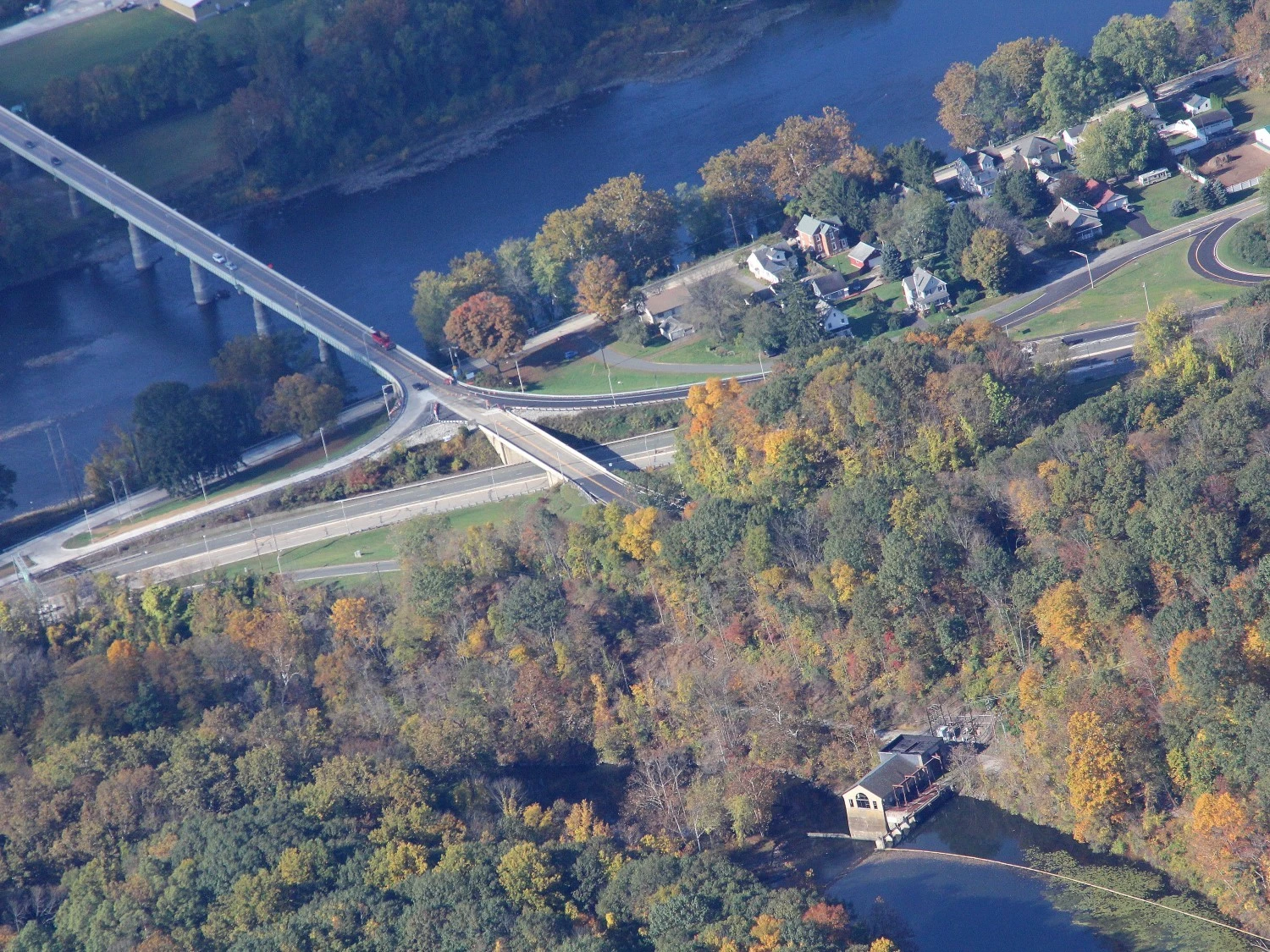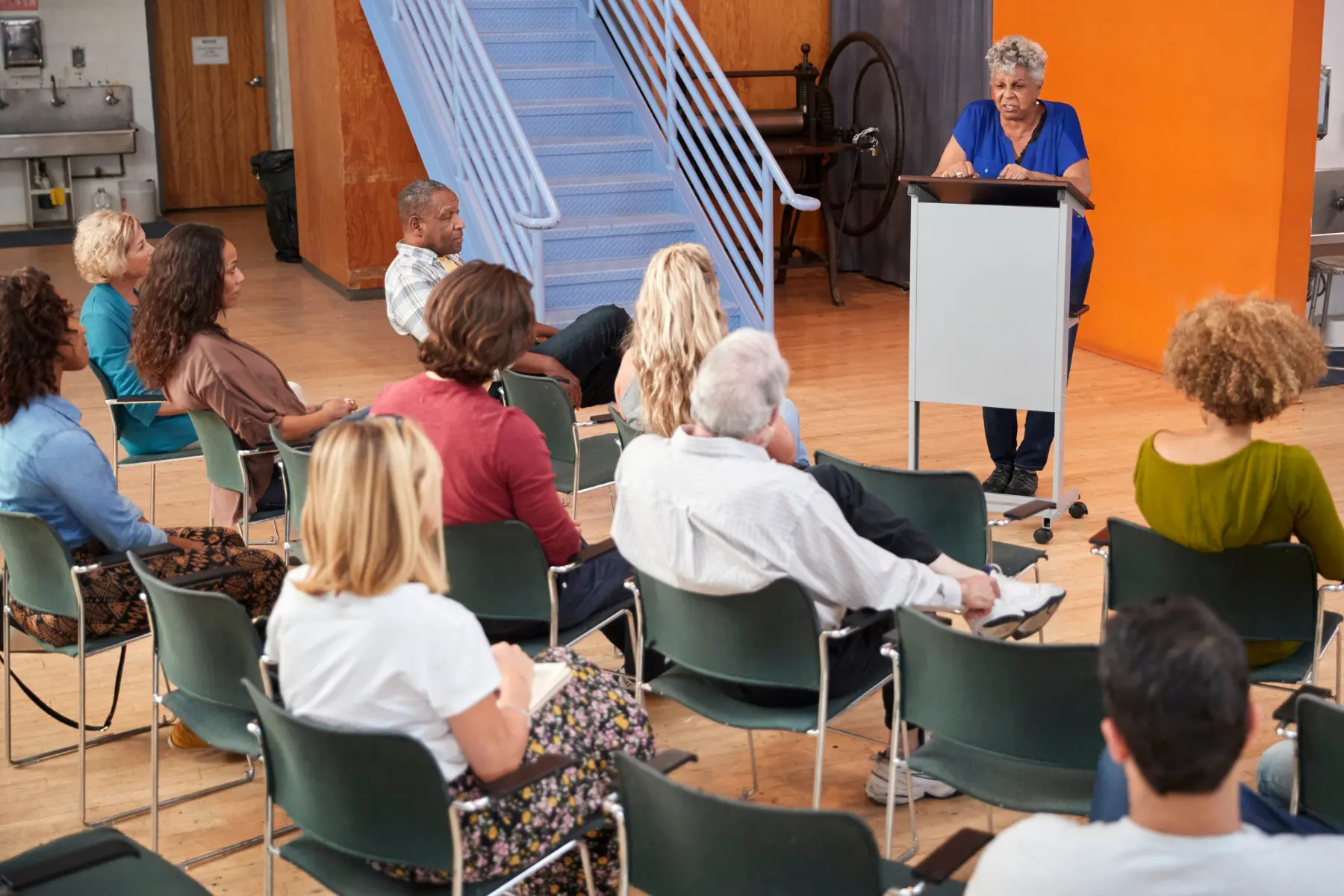
By Elizabeth Schuster, Environmental Economist
Introduction
I was recently at a conference and a presenter said, “Who enjoys logic models?” Logic models are another word for Theory of Change – and I proudly raised my hand. I looked around the room and saw that I was in a distinct minority. It seems that not a lot of nonprofit leaders enjoy doing theories of change.
I’d like to see that sentiment change, so I’m sharing some of my favorite secrets that I usually share with clients at our goal-setting retreats. I believe that a theory of change is a hidden tool that can help nonprofits become more strategic, have greater positive impact, and get more funding.
I want nonprofit leaders to have the tools they need to succeed.
Similar to many of you, I also had an initial dislike for theories of change. But over time, I realized it was based upon misunderstandings. In this blog I’ll provide my lessons learned from over a decade of working with nonprofit strategic planning, including:
- General information to clarify the basic definition and purpose of theories of change.
- Examples of why it helps nonprofits to have a well-crafted theory of change.
- The 4 most common areas nonprofits get it wrong – and what you can do differently to get better results.
Overview and context
In a nutshell, a theory of change shows how resources can be applied to solve problems in the short-term, and the pathway those actions will likely follow to result in long-term outcomes.
“[A theory of change] is focused in particular on mapping out or ‘filling in’ what has been described as the ‘missing middle’ between what a program or change initiative does (its activities or interventions) and how these lead to desired goals being achieved,” according to the Center for the Theory of Change.
Many different names exist for the general concept of a theory of change. We may call them logic models, means-ends diagrams, or situation or conceptual models – to name a few.
PRO-TIP: While there are subtle differences in the various names, at the end of the day, don’t get hung up on the language. What matters is that the approach that your organization chooses is useful for your organization.
Two examples of catering the use of theories of change to meet the unique needs of your nonprofit:
Example 1, a new conservation strategic plan for an organization whose staff was not familiar with conservation:
I had one client in the conservation space who was developing their first formal conservation plan within their larger organizational plan. Doing a simple theory of change activity at a workshop helped teach staff, Board members, and partner organizations about what conservation impact could look like.

Example 2, a food system strategic plan for a new nonprofit looking for grants:
With another client, we worked simple theories of change into their strategic planning. This set them up so once they pursued a federal grant opportunity, they already had the language needed to be able to do the theory of change that was required by that grant.


Photo. From a goal setting retreat, a series of sketches of result chains eventually can be used as elements in your Theory of Change.
Why it matters
A theory of change helps teams surface assumptions and gaps in logic, especially concerning cause and effect connections between interventions and results. This is important during the strategic planning process, to ensure that your selected strategies are the correct pathway to help your organization achieve desired outcomes.
However, at the core, a theory of change is almost more useful as a communication tool than as a strategy tool. Let me explain. This doesn’t necessarily mean you show your actual theory of change diagram to funders – though you can if it’s done in a compelling visual manner. More often, the theory of change helps your team clarify how you talk about your long-term impact. It sets the stage to be able to better communicate with your funders and other stakeholders.
Here are four examples of how a theory of change can help your nonprofit demonstrate progress towards long-term goals (or lack of progress!):
Example 3, an unintentional error made with strategies around how nature benefits people:
Sometimes the lack of a theory of change can lead to errors made by organizations! I’ve seen many examples of this with conservation nonprofits who want to show that their ecological protection or restoration work benefits communities. Case in point – while well-intentioned, many early approaches to using nature-based solutions for flood reduction did not benefit communities. After all, if a wetland reduces flooding but is in a rural area with no homes, it provides no benefits to communities. Conservation nonprofits had to change their approach and instead of always prioritizing sites that are best for biodiversity, they had to shift to choosing sites that are near homes or infrastructure AND benefit biodiversity. This is a clear case where a theory of change could have avoided this issue.

Example 4, the difficulties in showing direct benefits to ocean health from policy changes:
When I collaborated with Healthy Ocean Coalition, it was tricky to show which pieces of their campaigns and trainings had a direct impact on federal policy. Having a theory of change allowed them to show how their specific actions today were putting them on a pathway towards better ocean health in 10 years.

Example 5, help teams design a new pathway in complex systems:
Vance Russell worked with the Marin Forest Health Project to integrate forest health, financial management, measurement, and learning for community-based forest businesses. In the past, theories of change have not included both ecological recommendations and financial management recommendations, so this was something new to project partners. Something this complex would have been difficult to show without the visual of a result chain and helped to connect complex quantitative and spatial data to project interventions and outcomes.

Example 6, the challenges of seeing long-term water quality improvements:
One example is when I used to work with The Nature Conservancy in a watershed in northwestern New Jersey, we knew our projects alone wouldn’t benefit water quality. We were collaborating with nonprofit, foundation, local, state and federal partners also working in the region. Plus, we probably would not see major improvements in just five years. It often takes a generation (~30 years) to see notable improvements in water quality. Therefore, a theory of change was a critical tool to show how our investments now were on a trajectory to achieve long-term water quality improvements.

4 common things nonprofits get wrong – and what works better
What nonprofits tend to get wrong: Being too rigid about the rules around how to do a theory of change.
- What works better: Be more flexible in your approach, which can inspire creativity and innovation. I often lead theory of change activities in my goal setting retreats with nonprofits. And I give very little in terms of instructions. This allows the teams to focus on what is really useful to their team. It helps us get past perfectionism and get closer to communication and shared learning.
What nonprofits tend to get wrong: Waiting until the end of strategic planning to do a theory of change.
- What works better: Doing your first theory of change early or first in strategic planning. Consider this. Your team waits until the end of strategic planning, does a theory of change, and discovers a major misunderstanding or hole in logic. By then it’s too late to change the entire strategic plan. Start with a rough draft early in the process to surface assumptions, then finalize the theory of change at the end of the process.
What nonprofits tend to get wrong: Have one team member do the theory of change alone.
- What works better: I get it, sometimes our teams are so busy that it’s not efficient to have all your staff to the theory of change together. But the problem is, theories of change are communication tools. So if you are not working collaboratively, then you don’t achieve the full benefits of surfacing assumptions and improving your organization’s impact. Vance Russell added, “There are really great ways to do this collaboratively, which leads to great discussions and debates, such as putting up post-its or stickies on the wall…I would say no org should ever do this alone and it should always be workshopped.”
What nonprofits tend to get wrong: Focusing on too narrow of a set of outcomes or not focusing on how to scale over time.
- What works better: If you want to ensure sustainable long-term outcomes, your team needs to think holistically about the benefits and potential negative outcomes that might result from your work. I encourage teams to include all four types of outcomes in each result chain – 1) ecological, 2) social, 3) economic security, and 4) diversity, equity and inclusion outcomes. This helps teams think through who is benefiting and who is not benefiting in a range of different ways. And it puts your team in a better position to think strategically about how to start scaling your successes.
My hope is that more organizations will be interested theories of change when they understand the benefits. Theories of change are the foundation to help your team better understand how your programs have impact. Only when you understand your impact more fully can you effectively communicate your impact to funders.

Ocean health is an area where a theory of change is especially important, to show how near-term actions can lead to long-term impact.





